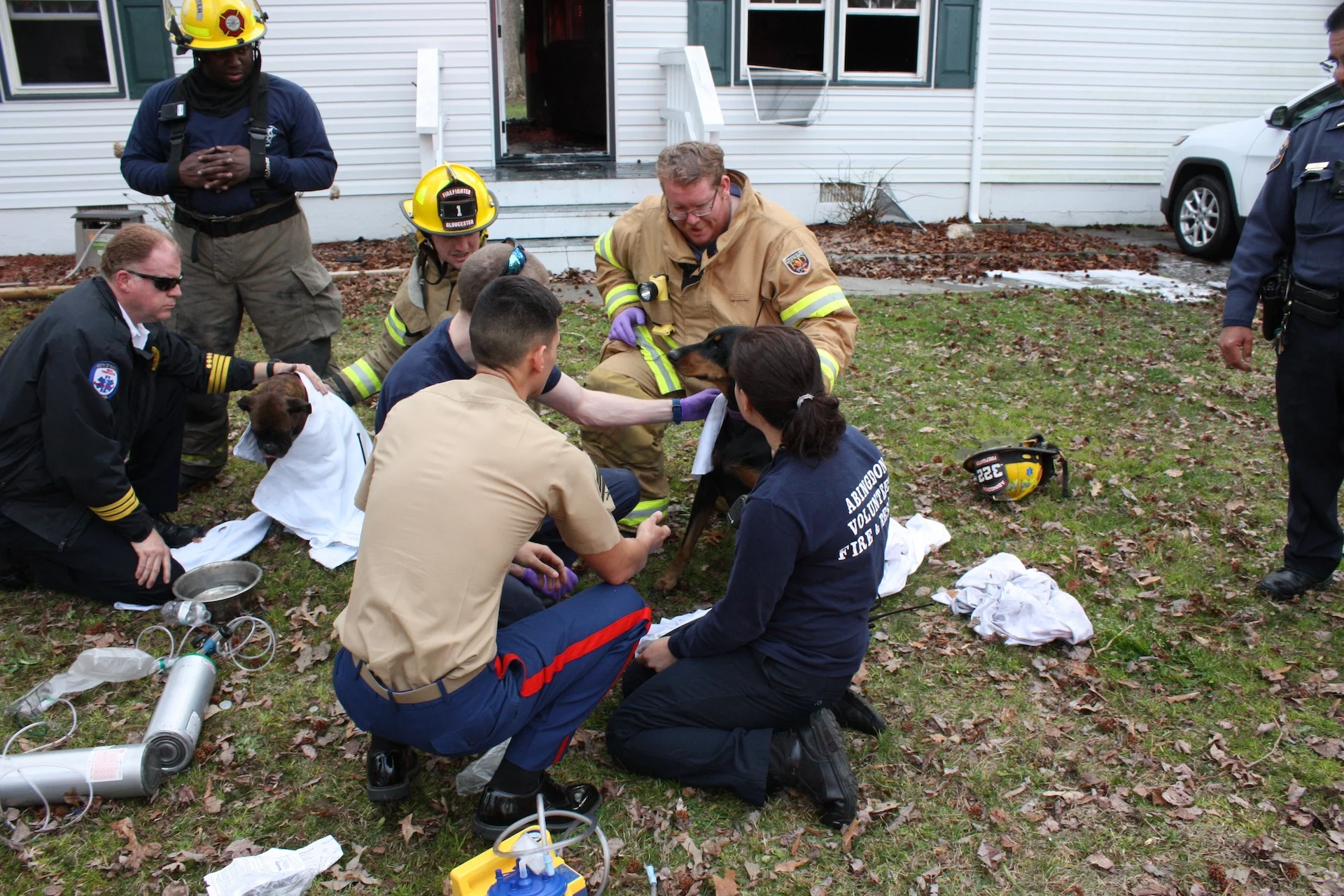
Tips to ensure you leave no animal behind when fleeing a wildfire
Too often our pets are left behind when evacuating wildfires. Here's what you should prepare for your beloved animals ahead of time
More often than not, wildfires don't give people much time to prepare before fleeing their homes, and sometimes that means things get left behind as they scramble to get to safety.
Among the possessions that are abandoned are animals, which the People for the Ethical Treatment of Animals (PETA) sees "far too often" when it gets tasked to attend natural disaster zones, says Ashley Byrne, the organization's director of outreach and communications.
CANADA'S WILDFIRES: Visit The Weather Network's wildfire hub to keep up with the latest on the active start to wildfire season across Canada.
"We do see animals who have been left behind to fend for themselves. Very often they don't make it. Our companion animals depend on us to protect them. They can panic in an emergency, just like humans," said Byrne, in a recent interview with The Weather Network.
"They're not prepared to fend for themselves in these situations. It is essential that we plan ahead, and that our plan includes our animals."

(© Scott Lewis/Submitted to The Weather Network)
Many people are 'unprepared' for wildfires
While it may seem inconceivable for people to leave their pets behind when fleeing their homes, Byrne said many people are unprepared and don't have an emergency plan in place that includes their animals.
"When wildfires hit, they panic. PETA is urging everyone to have an emergency evacuation plan in place before disaster strikes. [That] includes companion animals," said Byrne.
SEE ALSO: We know the human costs of wildfires, but what about our wildlife?
She noted that it's "better to prepare in advance and then find out that you actually don't need to evacuate" than it is to be caught off guard, with only minutes to get ready.

(PETA/Submitted to The Weather Network)
PETA encourages people to have an evacuation kit ready for their animal(s), and it should contain the following:
Food for several days
Water
Favourite toy and/or blanket
Veterinarian records
Collar with identification tag (ID)
Leash
Carrier
Gauze bandages
Contact information for the local humane society or open-admission shelter, among other items.
"Just having all these things ready to go can help if you are just met with a moment's notice to grab your animals and leave," said Byrne.
'Think ahead' when making a plan
Having mentioned readiness, Byrne said the most optimal time to make your plan is when there is no emergency since you want to "think ahead when you actually have time."

(Getty Images)
"Pack that emergency kit when disaster is not striking so you have time to be prepared, to be methodical, to think of everything you might need and every possible situation that could come up," said Byrne.
She noted that small animals such as cats, guinea pigs, rabbits and gerbils should be kept securely in a carrier, birds should be covered before being placed inside a carrier and a dog should "always" be on a harness with a collar that has ID tags and a leash.
For the bigger-bodied animals, you "absolutely need a plan in advance for evacuating them," Byrne added. Those include horses, sheep, cows and llamas, among others.
"But, if for any reason you have to evacuate immediately and aren't able to bring those larger animals with you, it is essential they not be penned or locked up, or tied up, so they can run and escape flames, and actually have a chance to survive," said Byrne.

(© Scott Lewis/Submitted to The Weather Network)
"That is the worst-case scenario. Ideally, you will have a plan in place ahead of time for how you move those animals out of the danger zone when you evacuate."
If you see abandoned animals, assist if you can
In "way too many cases" animals who are left behind don't make it, Byrne said, but when they do survive the ordeal, PETA and local authorities work either to reunite them with their guardians, if they weren't left behind purposely or negligently.
And, if the animals are purposely abandoned, people are prosecuted in some cases and the animals are given a new home. "It can be a crime to abandon animals. People who do can face legal consequences," Byrne said.
Even if you are not evacuating, there are other things to keep in mind to keep your animals safe if you are in a wildfire zone, the PETA director said.

(CANVA)
For example, if you're in an area with smoke and falling ash, you will want to avoid outdoor activities and limit your animals' access to the outdoors. Your dog or cat can go outside to go to the bathroom, but "it's not the time to take them for a run."
PETA has a full list of free tips to anyone who would like to prepare a disaster preparedness kit and plan that includes their companion animals.
"Way too often we see animals left behind in disaster situations. Anyone who sees an animal in danger or distress should assist if they can. But, if they're not able to, it's very important to note the exact location of the animal, and then alert emergency services as quickly as possible so that they can get help," said Byrne.
WATCH: It's wildfire season, pack your 'grab-and-go' box with these items
Thumbnail courtesy of © Scott Lewis.
Follow Nathan Howes on X, formerly known as Twitter.











